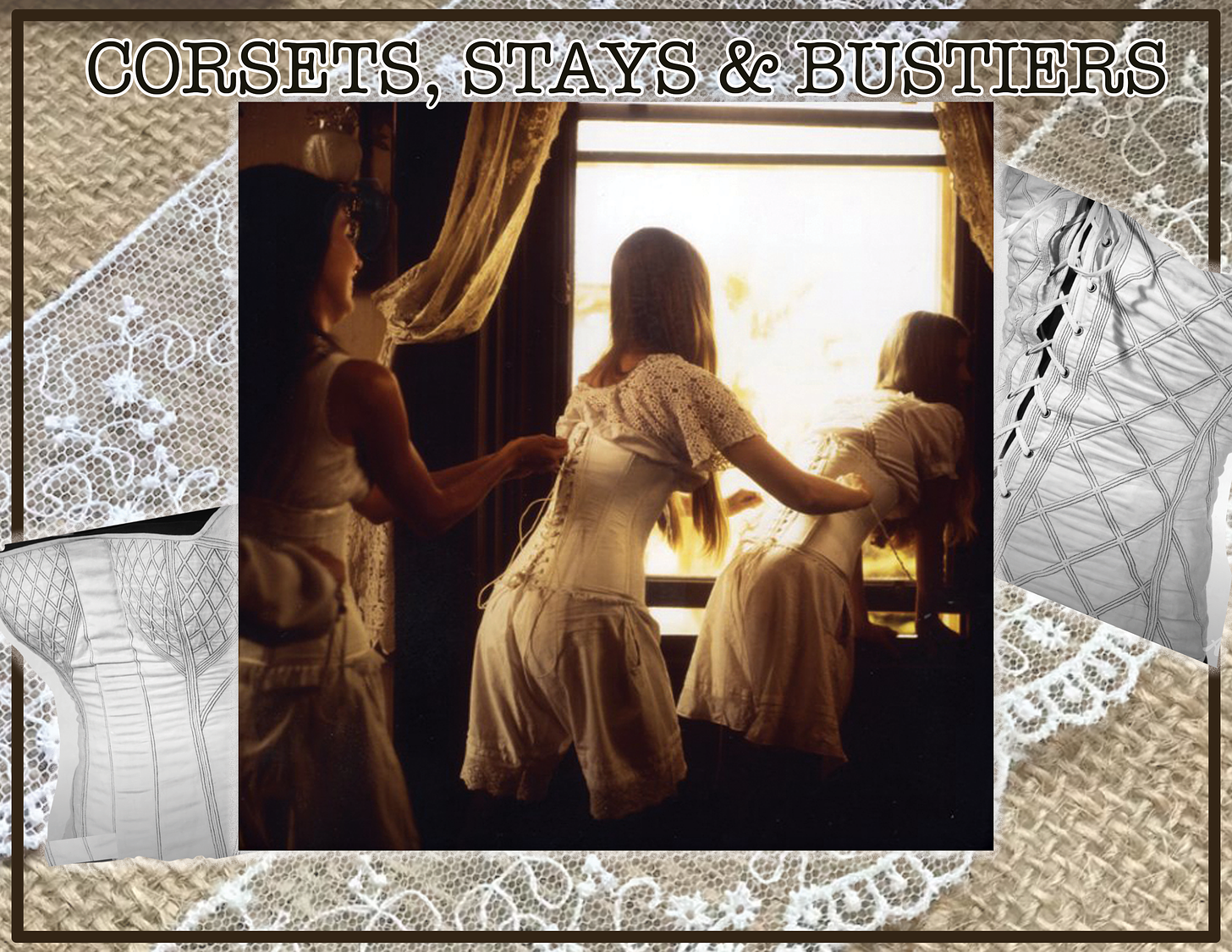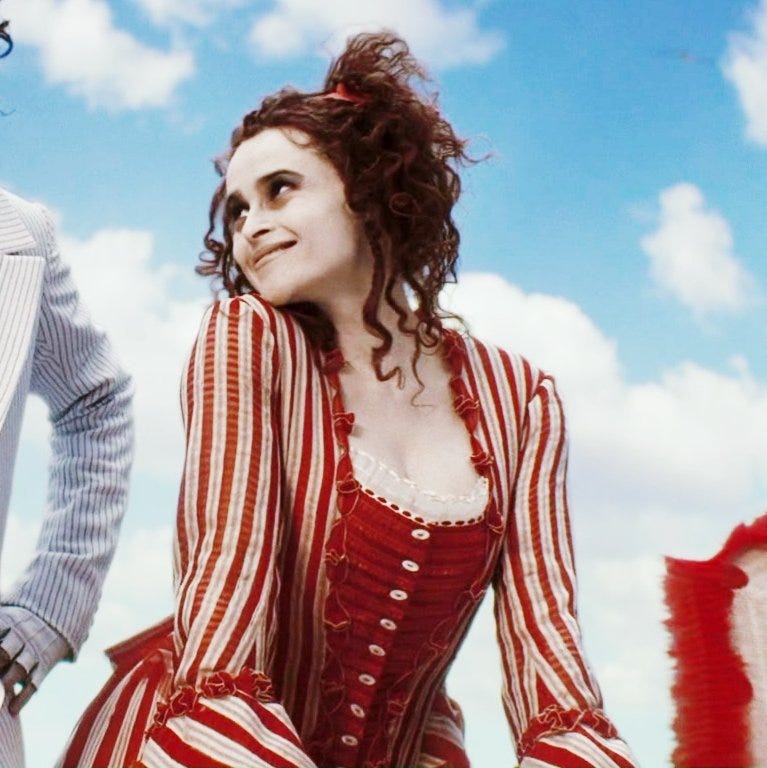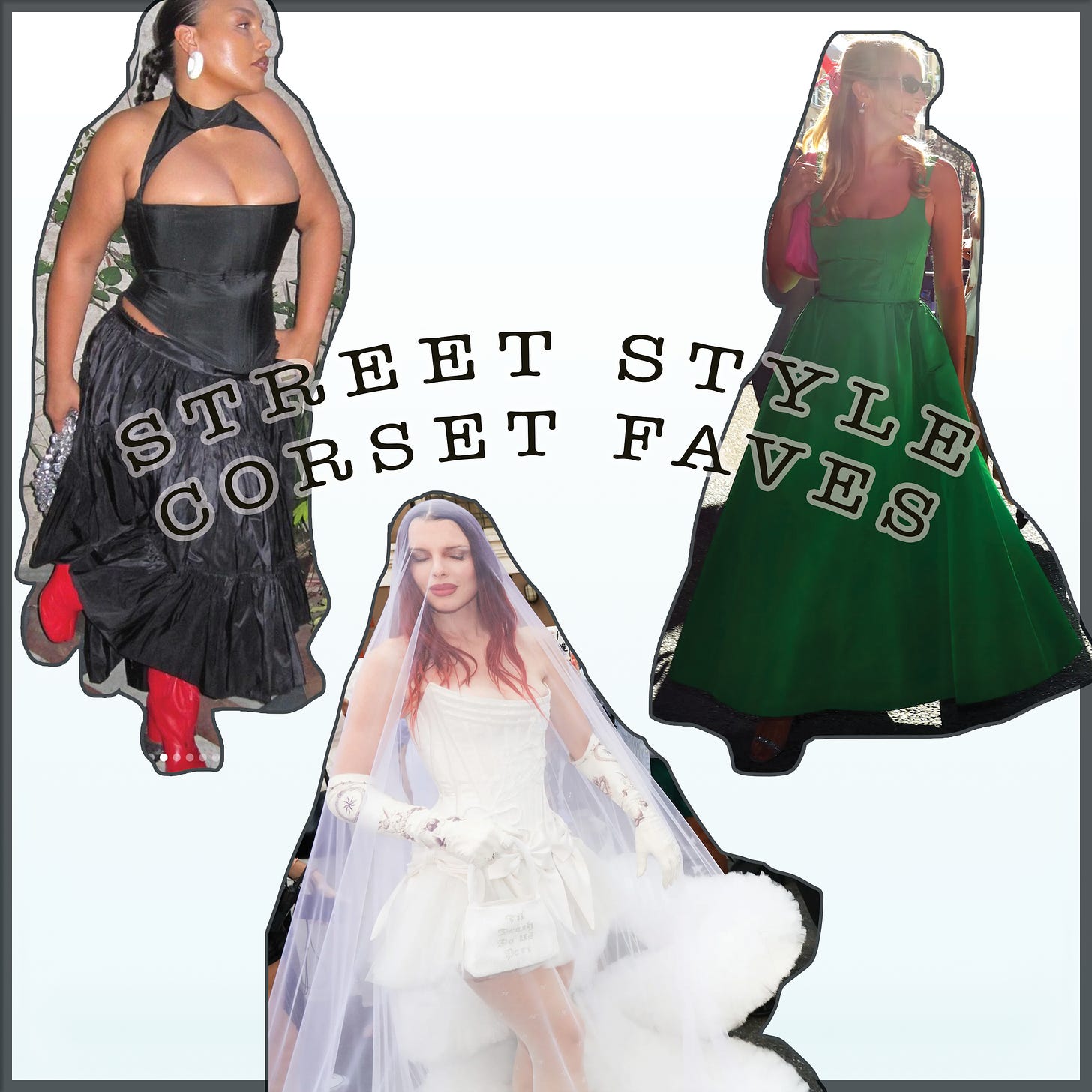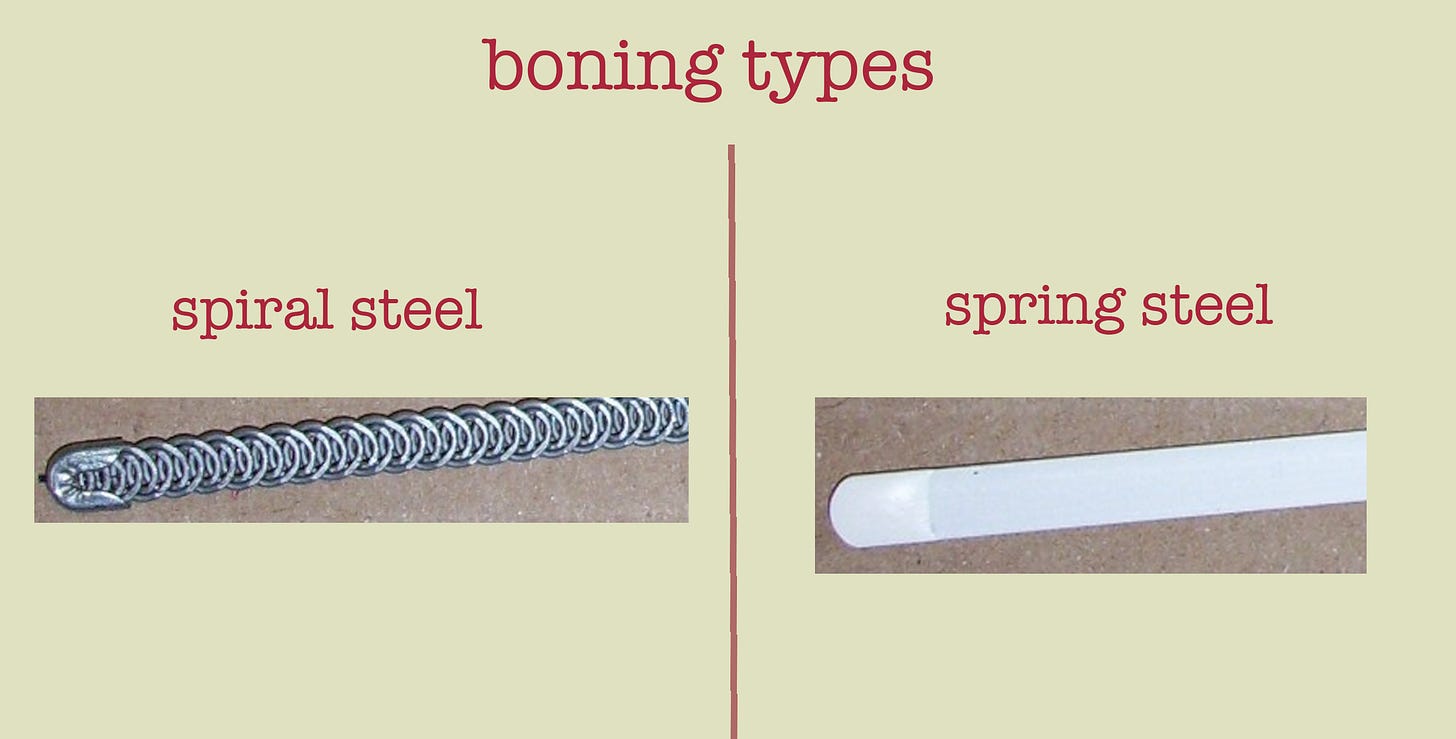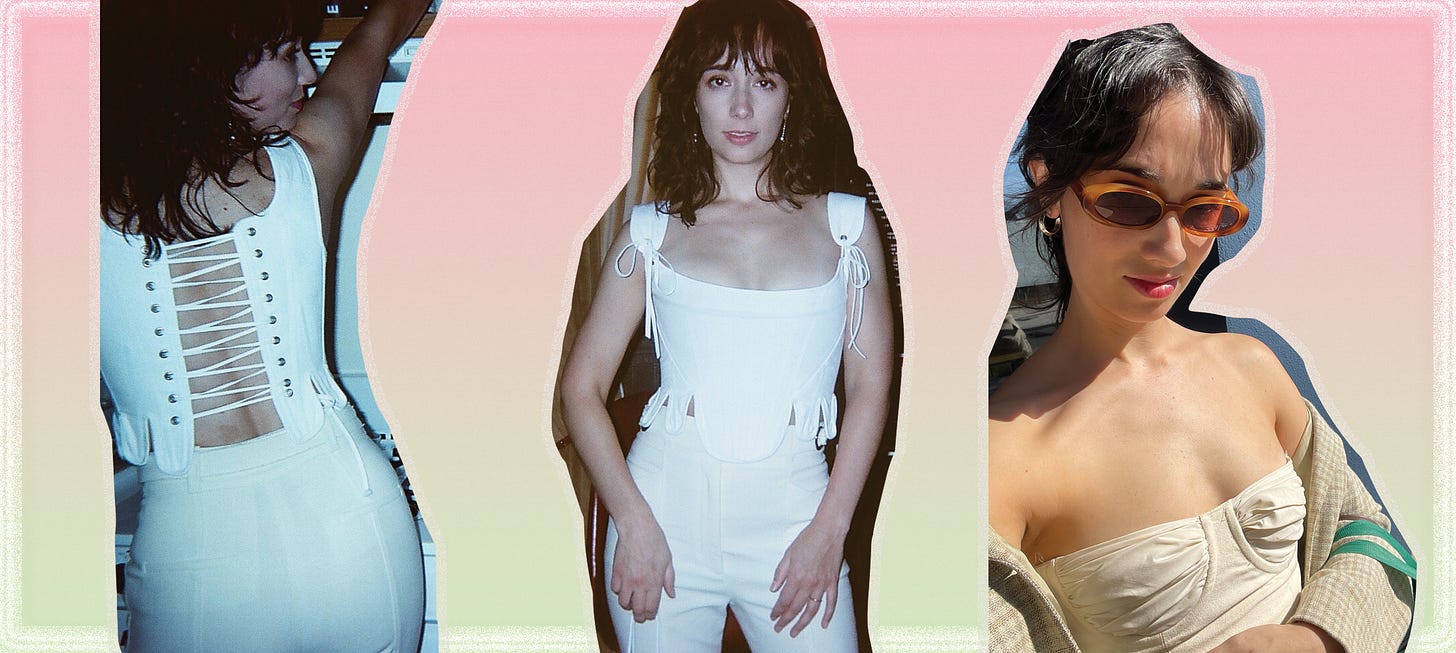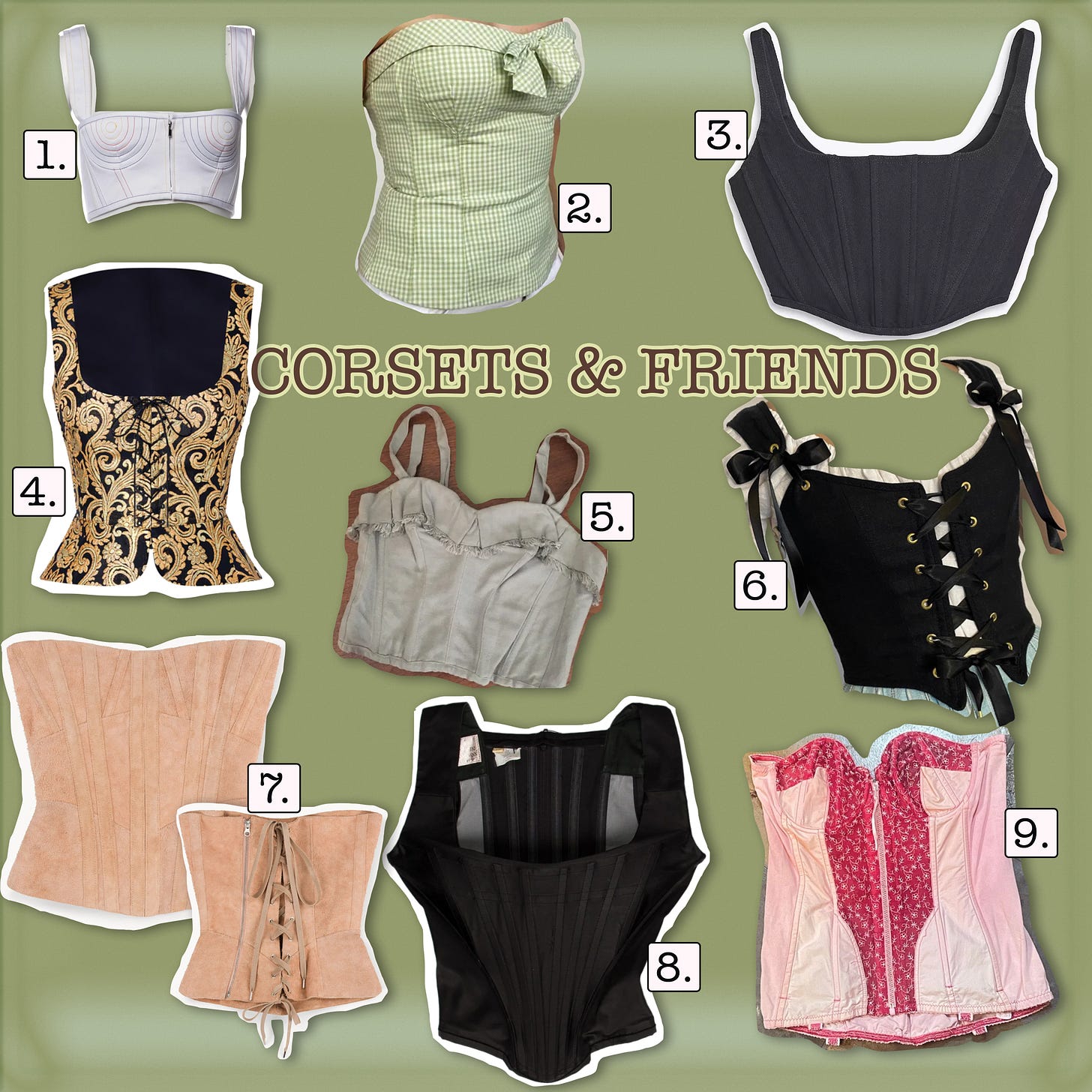Of corset's a love/hate relationship with corsets.
Taking the complete opposite direction from last week’s sweatshirts with some notes the on understructure supportive bodices we know as corsets.
Above: Picnic at Hanging Rock (1975) set in 1900; Corset from the Met Museum; lace from Etsy
Helena Bonham Carter once described how she loves doing period dramas in part because of the costumes, and yes, this includes the infamous corset. Helena said specifically: “And the corset, as punishing as it is, if you know how to wear it, exhaling after they put it on, does sort out your posture. There’s a lot to be said for it, really.” And she’s not wrong…While I have far less experience than H.B.C., I indulge in some corset-wearing from time to time. And since it’s been Fashion Week, I lightly reviewed some shows and selected the corset as a standout garment. Whether it’s a waspie (no bust coverage) at Mirror Palais, or a full denim corset at Ralph Lauren, the historical understucture support garment continues to be a hot ticket item in the mainstream. And since they’re ancient anyhow, I suspect corsets are here to stay(s) (that’s a historical fashion joke ;).
Above: Helena Bonham Carter in Sweeney Todd, (2007), set in 1785
I’m back in NYC staying at a friend’s again, and hopefully this will be one of the last times I’m writing to you from a suitcase!?—as I’ll be moving into a new apartment here soon. It feels surreal after all this time (four+ months) putting together outfits with so much limitation. This chapter of closet restrictions soon coming to a close serves as another reason to discuss the most restricting garment of them all.
Above: Fashion week(s) mini highlights with some stand-out corsets. From left: Mirror Palais Spring/Summer ’24, Schiaparelli Couture Fall ‘23, Dion Lee (Hari Nef modeling)! Spring/Summer ‘24, Ralph Lauren Spring/Summer ‘24
Above: Paloma Elsesser via her Instagram, Julia Fox at Fashion Week photographed by Phil Oh, unknown by Phil Oh
I’m proud to say I patterned, fit and constructed a corset-like garment in college; it was a strapless dress with an understructure, which shares a lot of the same elements as a corset. It is a bit awe-inspiring to consider all the inner workings of a corset that allow the woven garment to completely support any kind of bust without straps, and even create beautiful architectural shapes. For a true high quality, handmade understructure, there are sometimes up to six layers of various fabric, (including multiple types of interfacing which is an interlayer textile used for stability), and of course, boning.
Corset histoire.
You can really get into the weeds with fashion history and the various women’s understructure support garments; for instance: stays were technically not the same thing as corsets but now the terms are used interchangeably. A quick difference between the two is from a translated French fashion dictionary of the 1780s, which I discovered via Fashion Historian Abby Cox: “‘un corset, without any kind of stiffening.” Abby adds: “Corsets were significantly softer and less structured than stays.” And then there are bustiers (usually a shorter bra-like corset), waspies (as mentioned: no bust coverage), and brasierres, which functionally replaced the corset around the 1920s. Anyhow, it’s 2023 so don’t fret if you see the term “stays” instead of corset—it’s all in the same family now.
All about the boning.
[Note: there are more than the two boning types above but those are the ones discussed here]. Boning earned its name by having been originally crafted from whale bone in the early 1800s. Now it’s a catch-all term for the rigid strips sewn within a corset or understructure bodice to support and shape. Boning has most commonly been made of steel but there is also some boning made from plastic, and plastic-covered steel. Desired flexibility of the garment will determine boning selection for the designer (along with price); with spring steel being most common for for a proper conical torso. Spiral steel adds more flexibility and according to Erin Myers, my favorite costume creator on ETSY from whom I’ve purchased, that’s what she uses for her Victorian corsets. The white corset I bought from Erin (photos below) was made using spring steel boning.
I partially took apart a second hand Orseund Iris corset (above, right image) I purchased from a gal’s closet pop-up in the street to see what kind of boning the brand used, and it was a plastic-covered spring steel. The corset was beat up already, otherwise I wouldn’t have unstitched it to take a peek at the boning! The Marc Jacobs mini corset I’m wearing this week (just got this one second hand via the Real Real; also linked below) I obviously don’t plan to take apart, but I’d be curious if the site’s customer service could enlighten one on what boning was used for those interested. Non-steel boning can collapse/bend with wear which is of course not quality.
Like any garment that uses bra cups and underwire, as soon as you add underwire, there is more fitting and complex construction involved, so costs will be higher. So for any first-timers to the corset, I would recommend a simplified flat front to get the hang of boning around your middle. Underwire + cups corsets are maybe for the more experienced corset-wearer.
The closures.
While the convenience and ease of a back-zippered corset cannot be beat, I just adore the look and fit adjustability of the more complex, traditional closures. You can sometimes find a zippered corset that still has a lace-up back which is like the best of both worlds (KNWLS leather corset linked below has this construction). My white corset was made using a traditional grommet-back construction—you’ll notice the spiral lacing at the back with metal grommets. However back in the day the grommets would have been eyelets made of thread. I remember my teacher making corsets and hammering in the grommets like her life depended on it. True corset-making is not for the faint of heart. By the way: This is the best video I’ve found for how to spiral lace your own corset (it ain’t easy)!
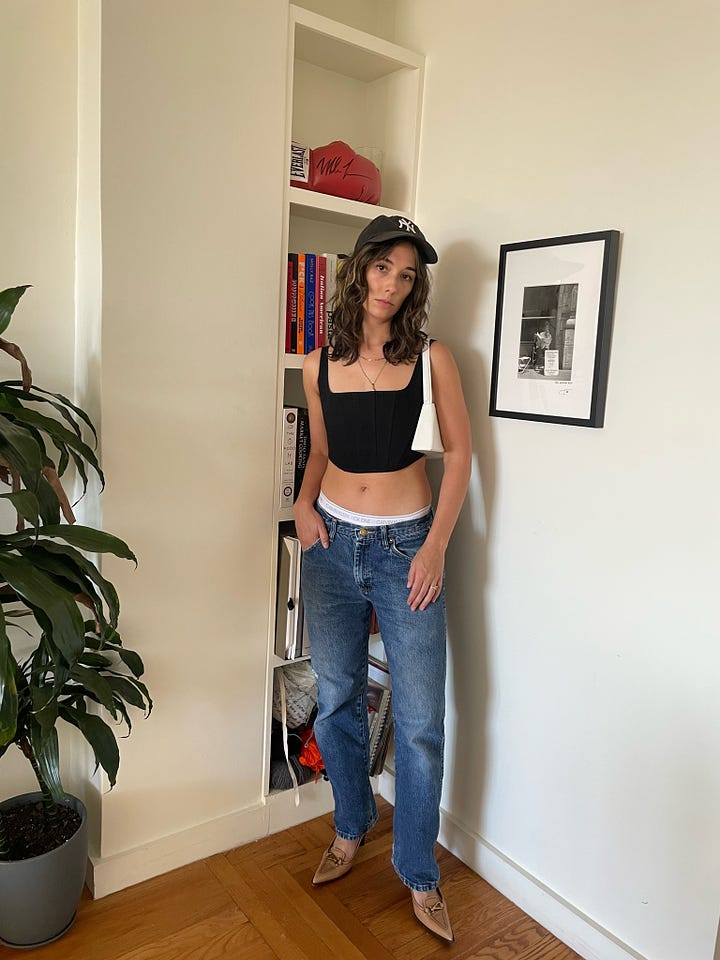

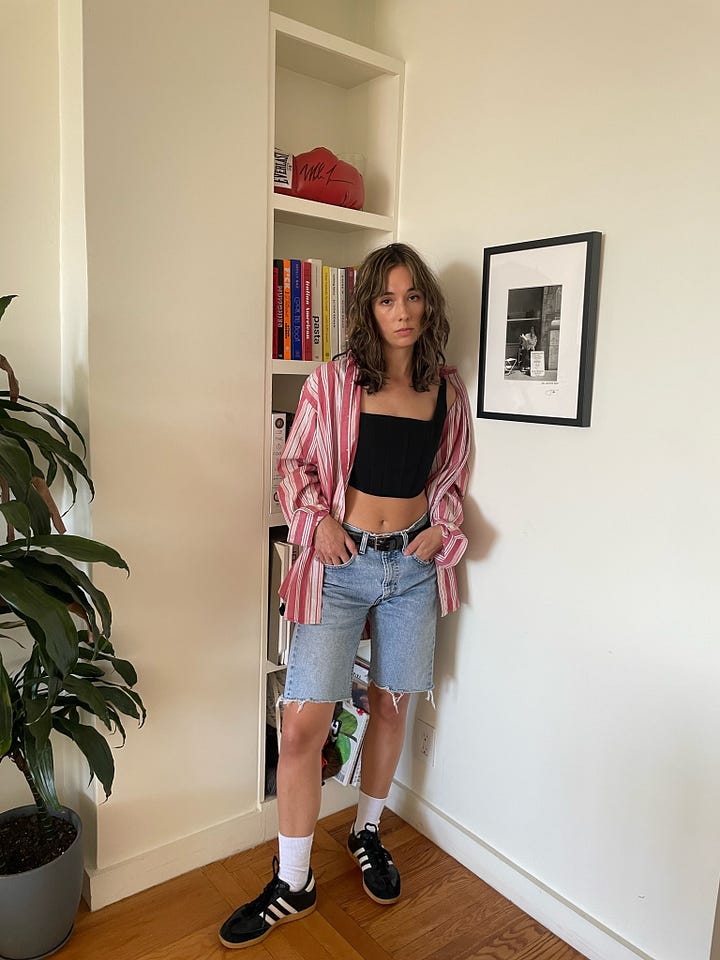
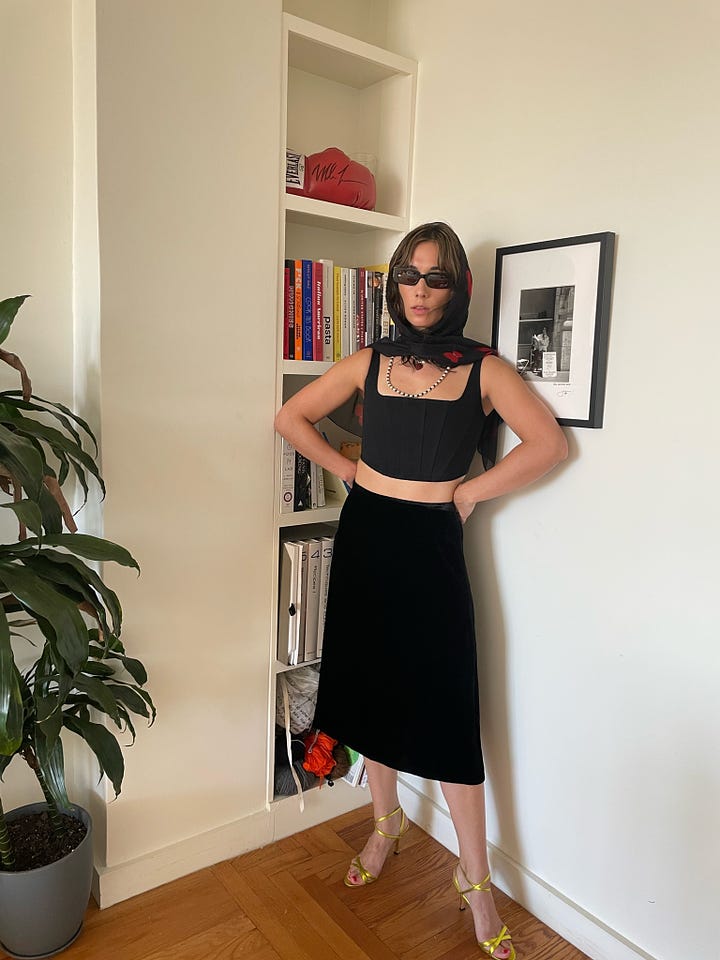
Above: I’m wearing a second hand denim Marc Jacobs corset/bustier w/ 1) vintage Wranglers, 2) Marc Jacobs poplin clown-collar blouse & Proenza Schouler chinos, 3) thrifted button-down & denim cut-offs, 4) second hand Joseph velvet skirt
Even my Marc Jacobs corset (above) has a hook & eye back closure, which I like more than a zipper, and at least there are two fit options (two layers of “eyes” for the hooks).
As always, fabric matters.
You may see some stretch fabric items labeled as corsets which isn’t totally incorrect, I suppose—but if you use a stretch fabric, it’s more of a lingerie bustier piece, like the stretch lace a bra would use. It’s also a lot cheaper to make (it’s part cut & sew knit, after all) than a woven corset with those multiple layers and non-stretch fit. So, a woven fabric that requires interlayers and more laborious construction is way harder to make and thus more expensive. Cotton canvas makes for a wonderfully structured corset within the woven category.
In summary, if you come across a corset with a zip-back, no underwire or cups, that’s shorter at center front (this means less to no hip fitting is involved and the boning can be cut shorter), the costs to make this particular kind of corset are definitely less than the traditional corset. And of course you can inquire what boning was used, which makes a difference in quality and cost, too. BUT the skill and time required to make any corset is still extensive.
No matter what your corset journey, there are obvious reasons to not be down with corset-wearing: they’re constricting, uncomfortable and their role in women’s history can be seen as questionable. But if you do decide to wear the notorious corset, maybe you’ll enjoy it like Helena muses, even if just for a few hours of miraculous waist-cinching and posture-correcting.
See you next week. xo Hannah





